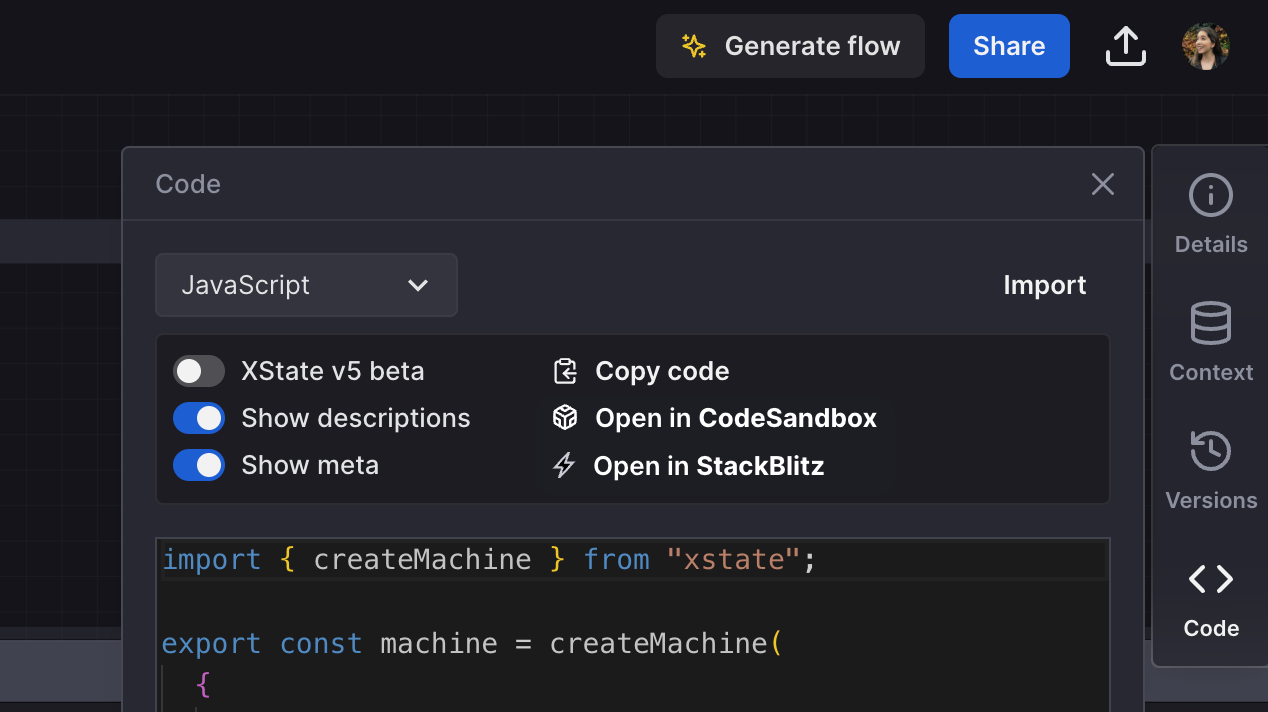This week has seen us introduce some of our biggest features yet and plenty of small updates to improve your Stately experience. Do you want to learn more about our vision for this release? Find out more in David’s latest blog post on Stately Studio 2.0.
14 posts tagged with “new”
View all tagsIt’s been about a year since we’ve released Stately Studio 1.0, and a lot has happened. Stately Studio is essentially a visual software modeling tool that strives to make it easy to create, manage, and use state machines, no matter how complex they may get. Primarily, it served as a powerful set of devtools for XState (an open-source library for creating state machines, statecharts and actors in JavaScript and TypeScript). You could import XState code to a state diagram, modify it visually in an intuitive drag-and-drop canvas, and export to XState. Eventually, we added more export options: JSON, Markdown, Mermaid diagrams, and stories.
But Stately Studio has bigger ambitions than just being a suite of devtools for XState. We’ve frequently heard that these state diagrams are an important source of truth for critical app logic, serving as documentation for the entire team that stays up-to-date with your code. But a reliable source of truth for app logic is a need for all apps, not just those that use state machines directly.
That’s why we’re so excited to release Stately Studio 2.0, which aims to meet developers where they are, no matter which libraries, frameworks, or even languages they use. There are many benefits to modeling app logic with state diagrams and the actor model, and we want to enable developers to take advantage of those benefits to build more robust, feature-rich, and maintainable app logic faster.
The Stately team is very excited to announce a new feature we’ve been working on for quite some time! Join us in welcoming Stately Sky to the Studio. Lovingly built with PartyKit, Sky is our new serverless platform for running workflows within the Studio. With Sky, users may now run their statecharts as live machines in minutes, complete with XState v5 actors and multiplayer support.
It’s been a while since our last changelog update, so let’s get right to it!
You can now open your machine in CodeSandbox or StackBlitz. These options show when you select either JavaScript or TypeScript export formats in the Code panel. When you open your machine in these external editors, it will be deployed as a demo app so you can jump quickly into prototyping and get an example of how to integrate your machine into your codebase.

The Stately team has had another busy week. The editor now has event schemas, and we’ve made many more improvements. Let’s dig in!
Yet another new Pro feature for you this week: you can now lock machines to prevent accidental edits. Lock a machine using the lock icon button in the machine Details panel.
This week, the Stately team has been hard at work with even more bug fixes and improvements.
You can now choose to export state and event descriptions and meta fields with your exported code.
Our new Learn Stately guidance got its own changelog this week, but there’s more that’s new to Stately.